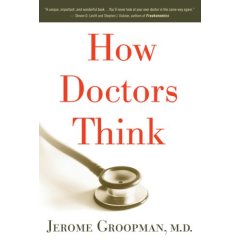
If you thought that increases in technology have caused medical errors to drop, then you would be wrong.
A new study out today makes these findings based on data from 2003-2005:
- Approximately 1.16 million total patient safety incidents occurred in over 40 million hospitalizations in the Medicare population, which is almost a three-percent incident rate. These incidents were associated with $8.6 billion of excess cost during 2003 through 2005.
- More than half (10 of 16) of the patient safety incident rates studied worsened from 2003 to 2005. These ten indicators worsened, on average, by over 11.5 percent while the other six indicators improved, on average, by eight percent.
- The total patient safety incident rate worsened by an additional 2.0 incidents per 1,000 hospitalizations in 2005 compared to 2003.
- The [Patient Safety Indicators] with the highest incidence rates were decubitus ulcer, failure to rescue, and post-operative respiratory failure. Failure to rescue improved six percent during the study period, while both decubitus ulcer and post-operative respiratory failure worsened by almost 10 and 20 percent, respectively.
- Of the 284,798 deaths that occurred among patients who developed one or more patient safety incidents, 247,662 were potentially preventable.
- Medicare beneficiaries that developed one or more patient safety incidents had a one-in-four chance of dying during the hospitalization during 2003 to 2005.
- There were wide, highly significant gaps in individual PSI and overall performance between the Distinguished Hospitals for Patient Safety and the bottom ranked hospitals.
- Medicare patients in the Distinguished Hospitals for Patient Safety had, on average, approximately a 40-percent lower occurrence of experiencing one or more PSIs compared to patients at the bottom ranked hospitals. This finding was consistent across all 13 PSIs studied.
- If all hospitals performed at the level of Distinguished Hospitals for Patient Safety, approximately 206,286 patient safety incidents and 34,393 Medicare deaths could have been avoided while saving the U.S. approximately $1.74 billion during 2003 to 2005.
Patient safety is defined in this report as care that is “freedom from accidental injury due to medical care, or medical errors.”
(hat tip to Day on Torts)



